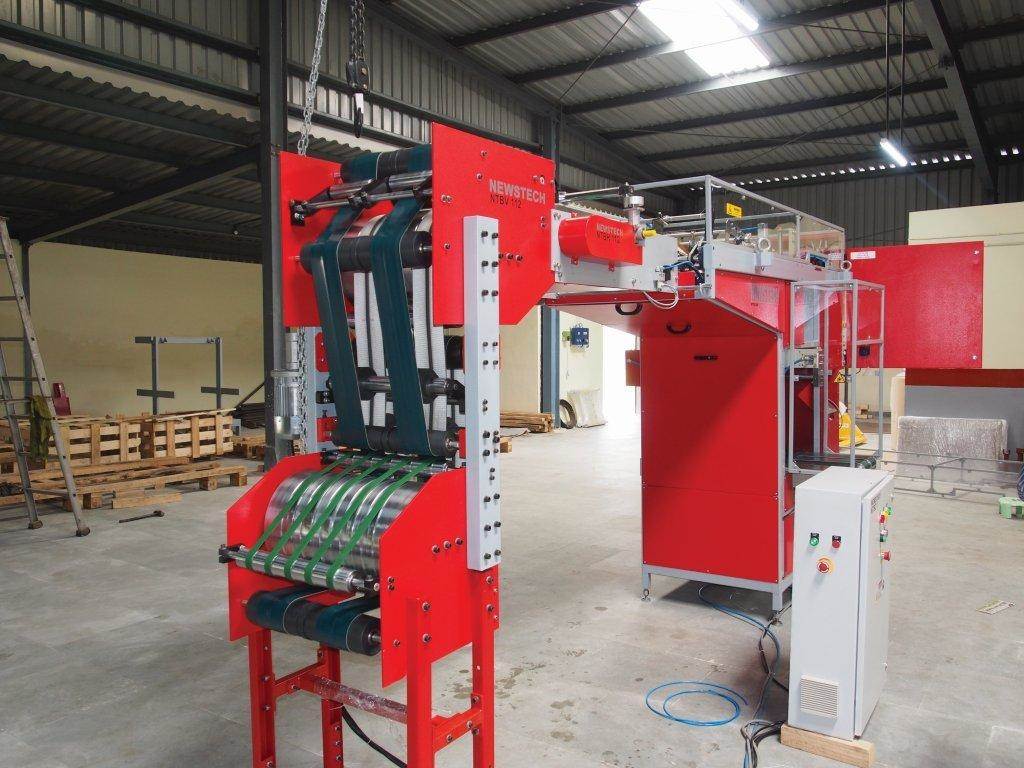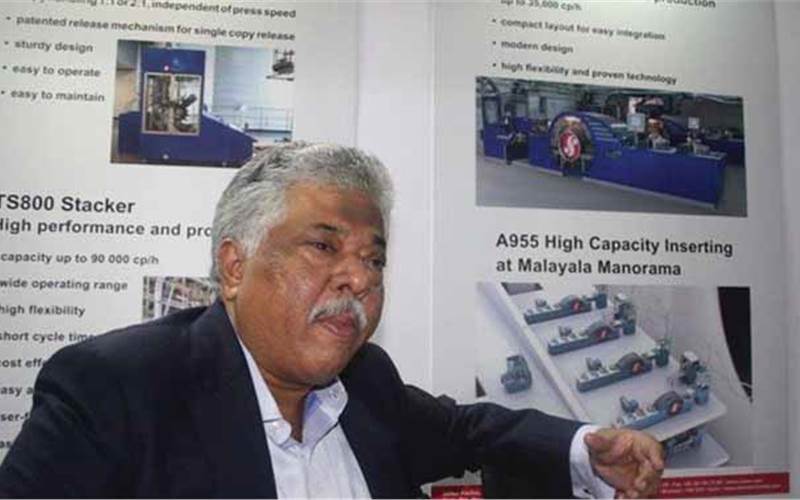Roy Alex: 24 pages, all colour, is the new standard
Roy Alex, a print industry veteran and the managing director, NewsTech India, talks about efficiencies, standardisation, heatset versus coldest and how the 4x1 press has become a standard format for Indian newspapers.
14 Sep 2016 | By PrintWeek India
PWI: There are two views about newspapers in India. One says, there is a slump. The other says, investment in the sector is recovering after a slump and is providing new opportunities for newspaper suppliers. Your view.
Roy Alex (RA): In a way, both are right. The English print media is not growing as they used to during the golden period of 1990-2012. The regional language media, however, has a good growth. This I think is linked to increase in the expendable income and the ‘literacy’ rate. Sensible, forward-thinking newspapers are investing in new plants to increase capacities, reduce ‘unit costs’ and are adding more colour. The standard is 24 pages, all colour.
PWI: The highest number of planned investments appear to be in the newspaper sector. But the interesting thing is, newspaper publishers are aiming to broaden the scope of their printing capacities. Newstech installation of two IST Metz UV curing systems (Newstech are distributors in South East Asia) from Germany at Bartaman in Kolkata, which shall be installed on their Hi-Line presses. Is this the future, maximising the utilisation of coldset presses? What trends are you seeing?
RA: There is a trend for the cover page (jacket) printed on glazed newsprint with UV inks. This is added revenue, as the advertisement is the mainstay of the media business and the good news is that it seems to be increasing. Many of the newspapers are also planning to invest in a UV curing system, especially those who do not have a heatset printing facility. This is because UV printing is a cheaper Capex investment, with a shorter installation period.
PWI: Can the coldset process compete with heatset?
RA: The coldset process with UV curing system is a good competition to heatset. One reason is, it is good for at least 70-80% of the products presently printed on the heatset process; especially on glazed newsprint. Plus it increases capacity utilisation without investing in heatset presses.
PWI: Publishing houses like Malayala Manorama has invested in a raft of kit (including five lines of 4x1 newspaper offset press, Diamond Spirit-SA). Medium-sized players in other states are curious to know what is the impetus behind such an investment?
RA: It’s not only Malayala Manorama but Matrubhumi, Dinamalar, Namaste Telangana, among the regional language newspapers which have invested in double-width presses. This is usually 4x1, which is the new format with a single around the blanket cylinder. Also, we can see this in plants where the existing single-width presses have reached the end of their productive life cycle. The name of the game is: to reduce manpower, increase colour pagination and consolidate operations with a lower footprint of machinery. Of course, advertising is the main factor giving impetus to these investments.
PWI: How do the big newspaper players in India (the top 20) ensure cost-efficiencies even as we see them create larger, more centralised printing sites?
RA: The real cost efficiencies come from higher speed printing, double-width presses which have a minimum speed of 75,000 CPH. This allows an increase in the number of editions since they have more time to print and reach remote areas, and compete with the localised newspapers.

Newstech's mailroom kit: vertical conveyor NTBV 112, horizontal conveyor NTBH 112, a stacker
PWI: We have seen the advent of players like Burda Druck (earlier HT Burda) with a gravure printing plant who print books, magazines, brochures and catalogues for markets in India. Is this business module a threat to the traditional newspaper ops?
RA: No, I do not think so. The cost of ‘forme’ (cylinder) making versus platemaking in terms of time, will never be a competition to the traditional newspaper operations.
PWI: Internationally, we have seen printing premises which can operate 24 hours daily by printing newspapers, supplements, inserts, and above all, direct mail and other promotional material distributed separately from newspapers. Some newspaper publishers are spinning off their printing activities by merging them with other printing operations in order to achieve greater economies. What can India learn from this?
RA: India is yet to get into the culture of direct mail promotional materials as seen in the developed world. This is waiting to happen, but we do not know when. The first step, of course, would be commercial inserting in newspapers, which is totally absent at present. As you know, this is mostly done by vendors, for whom inserting before delivery– adding, advertising and commercial material – is a side business.
PWI: You launched the NTPJ 100, supplement / insert jogger and the NTCS-205, cross strapper for newspaper bundles last year. What has been the market response?
RA: It is slow but steady. We have sold some equipment but it definitely could do better.
PWI: Is there an update on the Newstech plant? Other than mailroom systems what else do you manufacture at the new plant in Wada?
RA: We have started making the ‘frames’, required for the installation of the IST Metz UV Curing System, in our Sapne facility. For the ABP and Hindustan Times installations, these were imported at a much higher cost.
PWI: What is the current status of your joint venture with Idab Wamac (Schur Packaging) vis-à-vis manufacturing mailroom systems?
RA: The JV with IDAB Wamac ended in 2011, eight years after the start, as per the ‘transfer of technology’ guidelines of the government of India. However, we mix and match, as you could see in the Malayala Manorama plant, that is, a gripper conveyor and the inserters are from Schur and the stack/pack-line is from Newstech.
PWI: Why is the 4x1 format so well-entrenched in India? Be it: newspaper majors to book majors like S Chand?
RA: This is the most recent format for web presses, now with the single around blanket cylinders. This format reduces the plates and blanket cost by half, while providing double the number of copies, per cylinder revolution! This is the area we see as growth, as more regional papers look to increase pagination, colour and production capacity. Once they see this happen, they will shift from the single-wide to the double-wide 4x1 format presses.
PWI: Final question: You have installed more than 100 systems from the Turbhe unit since 2003 to companies like Anandabazar Patrika, Times of India, Malayala Manorama, Deccan Herald, Mathrubhumi, Assam Tribune, Nagaland Post, etc. Some of these sites have a capacity utilisation rate from 90 percent to as low of 25 percent. How can we standardise our plant and machinery utilisation rate, better?
RA: There is still a long way to go for a bulk of the Indian newspapers in terms of automation of the ‘process’, though this is surely happening. Standardisation is required, but this is how the stakeholders put a ‘value’ to this concept. The leading newspapers have already done this, with many of them having ISO certifications! But a lot more should be done.













 See All
See All